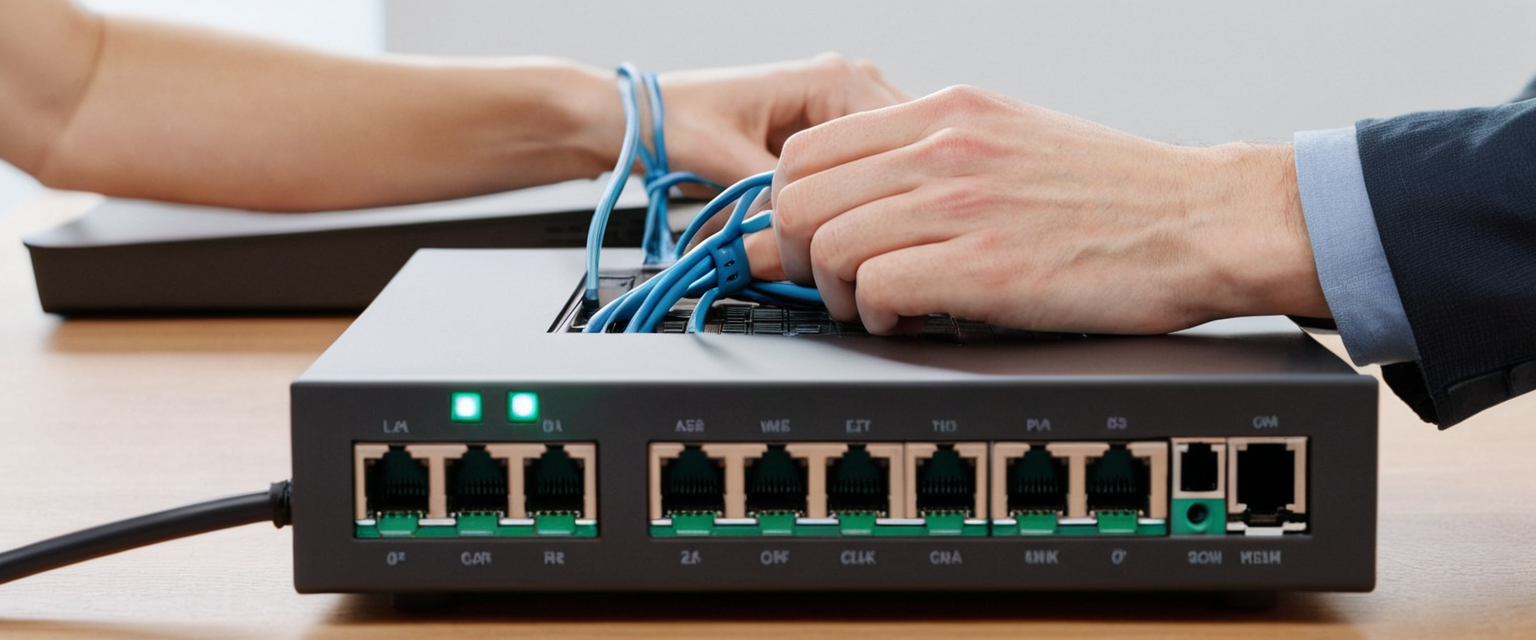
This comprehensive report examines the multifaceted approaches to creating and implementing Virtual Private Networks (VPNs), addressing both consumer-level implementations and enterprise-scale deployments. The analysis reveals that VPN creation spans multiple complexity levels, from simple installation of pre-built applications to sophisticated infrastructure development. Key findings demonstrate that successful VPN implementation requires understanding foundational architecture principles, selecting appropriate protocols, configuring robust encryption, and implementing proper security controls. The report identifies three primary implementation pathways: consumer app-based setup offering simplicity and ease of use, manual operating system configuration providing greater control, and self-hosted server deployment enabling maximum customization. Additionally, enterprise deployments require specialized considerations including site-to-site connectivity, multi-factor authentication integration, compliance documentation, and continuous monitoring. Organizations and individuals must carefully evaluate their specific requirements, threat models, and technical capabilities before selecting an implementation approach, as no single VPN solution universally addresses all use cases.
Understanding VPN Fundamentals and Network Architecture
Before creating a VPN, it is essential to comprehend the fundamental principles underlying Virtual Private Network technology and the architectural components that enable secure data transmission. A VPN operates by establishing a secure, encrypted connection between your device and a remote server controlled by the VPN service, effectively creating a protective tunnel for all internet traffic. This tunnel encapsulates data within additional packets, a process known as tunneling, which ensures that even if the outer layer is intercepted, the inner data remains secure and inaccessible without the appropriate decryption key. The foundational purpose of a VPN is to mask online activities, making it difficult for third parties such as hackers, Internet Service Providers, or government agencies to monitor internet traffic.
The architecture of a VPN comprises several critical components that must work together seamlessly. At its core, a VPN requires three essential elements: a VPN client, a VPN server, and a VPN router. The downloadable client connects users to servers around the world, allowing employees and remote users everywhere to access networks through secured channels. The VPN server receives encrypted data from clients, decrypts it, and forwards requests to their intended destinations on the internet or private networks. The VPN router secures and encrypts all network traffic, and notably, many modern routers come with VPN clients built in. Understanding this architecture is fundamental because each component plays a distinct role in the overall security and functionality of the VPN system.
When data travels through a VPN tunnel, it undergoes several transformations to ensure privacy and security. The process begins when a user activates their VPN on a device, which initiates a connection to a server operated by the VPN provider. Once connected, the VPN encrypts the user’s data, transforming it into an unreadable format known as ciphertext that only authorized parties with the correct decryption key can decipher. The encrypted data is then routed through the VPN server, which is often located in a different geographic region entirely. This geographic relocation serves a dual purpose: it masks the user’s actual IP address and makes it appear as though they are browsing from the server’s location. Upon reaching the VPN server, the data is decrypted and sent to its final destination, whether that be a website, application, or service. Any response from these destinations is then sent back through the encrypted tunnel to the user, ensuring that sensitive data stays private and the user’s location remains anonymous.
Consumer-Level VPN Setup Using Applications
The simplest pathway for most individual users to create a VPN connection involves using pre-built VPN applications provided by commercial VPN service providers. This app-based approach represents the easiest way to set up a VPN and is particularly recommended for first-time VPN users who may lack technical expertise. The process is remarkably straightforward, requiring no more technical knowledge than downloading and installing any other software application. Users begin by identifying which VPN provider best suits their needs, considering factors such as privacy policies, encryption strength, server locations, and pricing models. Reputable VPN providers maintain websites with downloadable applications for various operating systems and devices, making selection and installation accessible even to non-technical users.
The implementation process for consumer VPN applications follows a consistent, user-friendly workflow. After selecting a VPN provider, users navigate to the “downloads” page on the provider’s website and download the application for their specific device or platform, whether that be Windows, macOS, iOS, or Android. Once downloaded, the installation process typically involves simply clicking through the installer, similar to installing any other software application. After installation completes, users create an account with the VPN provider if they do not already have one, entering credentials that they will use to authenticate with the VPN service. Many providers offer options for two-step authentication or security keys during this account creation process, adding an additional security layer. Users then log into the VPN application they just installed using their newly created account credentials. Upon logging in, the VPN app typically automatically recognizes the user’s location and connects to the nearest available VPN server, optimizing both speed and performance. Finally, users should run a VPN speed test, which most applications provide directly within their interface, to verify that their connection is working correctly and delivering acceptable performance.
Selecting an appropriate VPN provider requires careful consideration of multiple factors that directly impact privacy, security, and reliability. The VPN marketplace includes numerous providers with varying reputations and capabilities, making thorough evaluation essential before committing to a service. Users should examine the provider’s privacy policy with particular attention to their logging practices, specifically verifying whether they maintain activity logs, connection logs, or aggregated usage logs. Reputable providers typically undergo independent security audits conducted by third-party firms, and the results of these audits should be publicly available and verifiable. The provider’s encryption protocols deserve careful scrutiny, as stronger encryption standards such as AES-256 provide superior data protection compared to weaker alternatives. Additionally, users should assess whether the provider accepts cryptocurrency payment methods, which provides greater anonymity compared to credit card payments that can be traced to identity information. Free VPN services warrant particular caution, as they often generate revenue through data harvesting, selling user bandwidth, or reselling browsing data to third parties, potentially creating privacy risks that undermine the entire purpose of using a VPN.
Manual Operating System VPN Configuration
For users requiring greater control over their VPN setup or those whose operating system does not work seamlessly with commercial VPN applications, manual VPN configuration through the operating system provides an alternative pathway. This approach is slightly more complex than the app-based method but offers considerably greater customization options and configuration flexibility. Manual setup requires users to understand specific VPN protocol details and server configuration parameters, but modern operating systems provide straightforward interfaces to facilitate this process. This method is particularly valuable for users managing network configurations across multiple connection types or those needing to troubleshoot connection issues.
Windows operating systems, including Windows 11 and Windows 10, provide built-in VPN configuration capabilities that do not require third-party software installation. To configure a VPN manually on Windows, users first access the Settings application and navigate to Network & Internet, then select VPN and choose “Add VPN”. Within the “Add a VPN connection” dialog, users must select “Windows (built-in)” as their VPN provider. The user then enters a memorable connection name, specifies the VPN server address or name, and selects the VPN type they wish to use, such as IKEv2, L2TP, PPTP, or Automatic. For authentication, users indicate whether they will use username and password credentials, smartcard authentication, one-time password, or certificate-based authentication. After saving these settings, users can access the VPN profile from the Network icon in the system taskbar and initiate connections on demand. Windows also offers an “Advanced options” section where users can configure additional settings such as proxy servers or modify VPN details as needed.
The manual configuration process differs across operating systems, reflecting each system’s unique network architecture and design philosophy. On Windows systems, the manual setup requires only the VPN protocol information and server address from the user’s VPN provider. Users look up the VPN protocol and VPN address for their chosen service, then input these details into the Windows VPN configuration interface. The process involves clicking the Start icon, navigating to Settings, selecting Network & Internet, clicking VPN, then selecting “Add VPN”. Users enter a recognizable connection name in the provided box and input the VPN server address in the designated field. They select their preferred VPN protocol from the dropdown menu, choose their authentication method, and click Save. Once saved, users can access the VPN profile through the Network icon on the taskbar, select the configured VPN, and click Connect. If prompted, users enter their authentication credentials and verify that the VPN profile displays “Connected” status. Throughout this process, users should periodically perform VPN speed tests and monitor status indicators to verify proper functionality.

Building Self-Hosted VPN Servers
Creating a self-hosted VPN server represents a more advanced implementation pathway, suitable for users who wish to maintain complete control over their VPN infrastructure and do not wish to rely on third-party VPN providers. Self-hosting options range from using traditional home computers to deploying dedicated hardware or cloud-based virtual servers. This approach offers significant advantages including complete data control, elimination of monthly subscription fees, and the ability to customize every aspect of the VPN infrastructure. However, self-hosting also demands substantially greater technical expertise and ongoing maintenance responsibilities.
One accessible pathway to self-hosting involves using a Raspberry Pi, a compact, low-cost computing device that can function as a dedicated VPN server with minimal power consumption and expense. The PiVPN project provides an elegant solution for users wanting to turn a Raspberry Pi into a secure OpenVPN or WireGuard server with relative simplicity. To implement this solution, users first install Raspberry Pi OS Lite on their Raspberry Pi device, with the latest version recommended for optimal compatibility. After the operating system installation, users may need to open specific ports on their router to enable external VPN access. The actual VPN server installation then becomes remarkably straightforward through the PiVPN installer, which automates the configuration of either OpenVPN or WireGuard protocols. PiVPN handles encryption, authentication, certificate generation, and all security hardening automatically, configuring AES and SHA256 encryption and upgrading the TLS protocol right out of the box. The entire process is managed through simple command-line instructions, and after installation completes, users have access to a “pivpn” command that allows them to easily manage client profiles, add new users, revoke access, and list active connections.
Protect Your Digital Life with Activate Security
Get 14 powerful security tools in one comprehensive suite. VPN, antivirus, password manager, dark web monitoring, and more.
Get Protected NowAlternatively, users can set up VPN server software on traditional personal computers or cloud-based virtual servers for greater scalability and performance. Windows systems offer built-in VPN hosting capabilities, though these are less powerful than dedicated VPN server solutions. More sophisticated implementations utilize OpenVPN server software, which is available for every operating system from Windows to Mac to Linux. When self-hosting on personal computers, users must ensure the machine remains powered on continuously, as VPN servers require constant availability for client connections. Users must also forward appropriate ports from their router to the computer running the server software, a process that requires understanding network configuration and firewall management. Setting up dynamic DNS on the router becomes essential, as this service provides a fixed address that clients can use to connect even if the home Internet IP address changes. Users must also configure their VPN server with strong security credentials to prevent unauthorized connections; using OpenVPN server configuration with cryptographic key files provides much stronger authentication than simple passwords alone.
Cloud-based VPN server deployment offers advantages over home-based hosting, as it eliminates dependence on home internet reliability and allows users to select servers located in specific geographic regions. Users can deploy VPN server software on virtual private servers obtained from hosting providers such as DigitalOcean, Linode, AWS, or Google Cloud. The general process involves creating an account with a hosting provider, provisioning a virtual server running a compatible Linux distribution such as Ubuntu, installing the chosen VPN software, and configuring the server according to security best practices. Many hosting providers offer one-click installation options or community scripts that automate much of the configuration process, though users should verify these implementations meet their security requirements. After server provisioning, users download configuration files from their VPN server and distribute these to authorized users who wish to connect. Users can use tools like Easy-RSA to generate cryptographic certificates and keys that provide strong authentication without relying on passwords. The cost of running a self-hosted cloud VPN server typically ranges from a few dollars monthly, potentially representing savings compared to commercial VPN subscriptions while providing complete control over data and privacy.
Enterprise and Site-to-Site VPN Deployment
Organizations managing multiple office locations, cloud deployments, or complex infrastructure require different VPN approaches than individual consumers. Enterprise VPN implementations typically use site-to-site VPN connections to securely link entire networks rather than individual remote access connections. These deployments connect multiple networks located in different geographic areas, creating secure communication channels between them while maintaining constant connectivity. Site-to-site VPNs are divided into two categories: intranet-based configurations that connect different branches of the same organization, and extranet-based configurations that connect an organization to trusted third-party networks or service providers.
Microsoft Azure provides cloud-based infrastructure for establishing site-to-site VPN connections between on-premises networks and virtual networks in Azure. The Azure portal offers guided workflows to simplify this process, though the configuration involves multiple interdependent components. Users begin by creating a virtual network within Azure to represent their cloud infrastructure. Next, they create a VPN gateway, which serves as the termination point for the VPN tunnel on Azure’s side. Simultaneously, users create a local network gateway representing their on-premises network and VPN device. The configuration process includes specifying the local network’s IP address ranges, the on-premises VPN device’s public IP address, and pre-shared authentication credentials. Users then establish the actual VPN connection, specifying connection parameters such as IKEv2 protocol, DPD timeout values, and IPsec policies. Azure offers options for both static routing and dynamic routing using Border Gateway Protocol, allowing organizations to choose the approach best suited to their network architecture. The entire deployment process typically requires 90-120 minutes, including the time needed for VPN gateway creation and deployment.
Amazon Web Services provides similar site-to-site VPN capabilities through their Site-to-Site VPN service, which operates on comparable principles to Azure’s offering. AWS users begin by creating a customer gateway representing their on-premises VPN device and a virtual private gateway representing the AWS side of the connection. Users then create a VPN connection linking these two gateways and configure routing to direct traffic through the VPN tunnel. AWS supports both dynamic routing through BGP and static routing depending on the customer gateway device capabilities. Users must download a configuration file from AWS containing connection parameters and use this file to configure their on-premises VPN device. Google Cloud Platform similarly offers VPN gateway services that connect on-premises networks to Google Cloud virtual networks using comparable configuration workflows.
VPN Protocols Selection and Configuration
The specific VPN protocol used forms a critical component of any VPN implementation, as different protocols offer varying balances between security, speed, and compatibility. VPN protocols define the rules that govern how data is encrypted and transmitted over the network connection, and different protocols employ different encryption algorithms, authentication methods, and operational approaches. Protocol selection significantly impacts both security and performance, making this decision consequential for any VPN deployment.
OpenVPN stands as one of the most widely adopted and recommended VPN protocols, functioning as both a software project and a tunneling protocol that enables encrypted connections over the internet. As an open-source protocol, users can examine OpenVPN’s underlying code for security vulnerabilities, providing transparency that proprietary protocols cannot match. OpenVPN has achieved status as an industry standard and provides strong encryption, authentication capabilities, and versatility to handle different network arrangements. The protocol operates in two principal modes: TCP mode prioritizes reliable packet delivery, while UDP mode emphasizes speed and is beneficial for time-sensitive transmissions like live video or voice communication. OpenVPN supports both IPv4 and IPv6 protocols, ensuring compatibility across modern and legacy network infrastructures. The protocol employs the OpenSSL library for encryption tasks, using SSL/TLS protocols for key exchange, which supports encryption up to 256-bit using sophisticated cipher suites. OpenVPN’s flexibility allows custom directives within its configuration, enabling administrators to allocate fixed IP addresses to VPN clients or redirect traffic through proxy servers. Many enterprises favor OpenVPN specifically for its ability to manage complex enterprise network configurations through an intuitive admin web interface.
WireGuard represents a newer alternative that has gained substantial recognition for its lightweight design and superior speed performance compared to OpenVPN. Released in 2015, WireGuard was created specifically to improve upon existing VPN protocols by being simpler, faster, and easier to deploy. The protocol uses a simplified cryptographic approach with a fixed set of modern, high-speed algorithms for key exchange, making it inherently faster than OpenVPN’s more flexible but computationally intensive approach. WireGuard’s lean codebase makes it easier to audit for security vulnerabilities and potentially reduces its attack surface. Testing reveals that WireGuard consistently operates 75% quicker than OpenVPN regardless of geographic location or device type. On shorter-distance connections, WireGuard’s speed advantage becomes even more pronounced, with the protocol running nearly three times faster than OpenVPN. Additionally, WireGuard establishes connections much faster than OpenVPN; while OpenVPN connections can take as long as 8 seconds to initiate, WireGuard connections establish in approximately 100 milliseconds. These performance advantages make WireGuard particularly suitable for applications requiring speed, such as gaming or video streaming.
IKEv2/IPSec represents another important protocol option, particularly valued in mobile environments where network stability during transitions is critical. IKEv2 stands for Internet Key Exchange version 2 and was developed through a joint project between Cisco and Microsoft. The protocol offers advantages in speed, security, stability, CPU usage, and particularly the ability to re-establish connections seamlessly, making it excellent for mobile users. IKEv2 uses a broad selection of cryptographic algorithms including AES, Blowfish, Camellia, and 3DES, providing significant flexibility in encryption approaches. From a performance standpoint, IKEv2 is frequently faster than OpenVPN due to lower CPU requirements. The protocol’s particular strength for mobile users lies in its “Mobility and Multihoming” capability, which enables IKEv2 to maintain VPN connections during network changes, such as when a device switches from Wi-Fi to cellular data or moves between access points. Some operating systems also support an “always on” function with IKEv2, commonly called a kill switch, which forces all internet traffic through the VPN tunnel, preventing data leaks.
L2TP/IPSec and PPTP represent older VPN protocols that were historically important but are now declining in usage due to security weaknesses and the availability of superior alternatives. The Layer 2 Tunneling Protocol paired with IPSec provides confidentiality, authentication, and integrity. L2TP/IPSec double-encapsulates data with encryption occurring through the IPSec protocol, which can result in slower performance compared to protocols offering single encapsulation. The protocol is vulnerable to blocking by firewalls and proxies because it relies on fixed UDP ports, making it easier to identify and restrict compared to OpenVPN. Point-to-Point Tunneling Protocol, one of the oldest VPN protocols, is becoming increasingly obsolete due to its security vulnerabilities and the availability of faster, more secure protocols. Specifically, PPTP is vulnerable to offline brute force attacks on captured authentication hashes. Microsoft has officially deprecated both PPTP and L2TP in future versions of Windows Server, recommending instead that administrators transition to SSTP or IKEv2.
SSTP (Secure Socket Tunneling Protocol) and the deprecated protocols represent Microsoft’s evolution in VPN technology, with SSTP offering better security and firewall compatibility than its predecessors. SSTP uses SSL/TLS encryption to provide a secure communication channel and can easily pass through most firewalls and proxy servers because the traffic appears identical to normal HTTPS Internet traffic. The protocol is fully integrated with Microsoft operating systems, providing simplicity in deployment and configuration. SSTP supports strong encryption algorithms and robust authentication methods, making it substantially more secure than PPTP or L2TP. For organizations still using Windows RRAS servers, SSTP represents the more secure alternative to deprecated protocols.

Security Best Practices for VPN Implementation
Creating a secure VPN requires far more than simply selecting encryption and running the software; comprehensive security practices must inform every aspect of VPN implementation and maintenance. The security landscape surrounding VPNs has evolved substantially, with nation-state and criminal actors exploiting VPN vulnerabilities to gain unauthorized network access and execute devastating attacks. Implementing VPNs without adequate hardening leaves organizations vulnerable to credential harvesting, remote code execution, session hijacking, and arbitrary data theft from VPN devices. Security best practices must address VPN selection, configuration hardening, access control, and continuous monitoring to create a comprehensive security posture.
Selection of the VPN solution represents the foundational security decision that influences all subsequent security outcomes. The National Security Agency and Cybersecurity and Infrastructure Security Agency jointly recommend selecting standards-based VPNs from reputable vendors that have demonstrated proven track records in quickly remediating known vulnerabilities and following industry best practices. Organizations should avoid non-standard VPN solutions, particularly proprietary SSL/TLS VPNs using custom, non-standard features that create additional risk exposure even when the underlying TLS parameters are secure. Instead, organizations should prioritize standardized IKE/IPSec VPNs that have been validated against standardized security requirements for VPNs. The National Information Assurance Partnership maintains a Product Compliant List identifying VPNs that have undergone rigorous testing by third-party laboratories against well-defined security features and requirements. Proprietary protocols may or may not have defined security requirements and may not have been analyzed and tested as thoroughly as standards-based protocols.
Multi-factor authentication represents a critical security enhancement that prevents credential-based attacks even when user passwords are compromised. VPN connections are frequent targets for phishing and credential theft attacks, making password-only authentication insufficient. Multi-factor authentication augments primary password authentication with an additional authentication layer requiring users to provide something they know, something they possess, or something they are (their inherent characteristics). MFA prevents attackers from accessing accounts even if they obtain both username and password credentials. Organizations should implement MFA solutions that support diverse authentication methods, including one-time passwords, authenticator apps, hardware tokens, and push notifications, providing flexibility for different user scenarios and device types. Some solutions also support certificate-based authentication, smartcard authentication, or biometric authentication, further enhancing security. Windows VPN implementations support several EAP-based authentication methods including EAP-TLS supporting certificate authentication with software or TPM-based key storage, smartcard certificates, and Windows Hello for Business certificates.
Attack surface reduction requires disabling VPN functionality unrelated to core VPN operations and restricting access to VPN administration interfaces. Remote access VPN servers represent critical entry points into protected corporate networks, making them priority targets for adversaries seeking to compromise infrastructure. Organizations should immediately apply patches and updates to address known vulnerabilities that are sometimes exploited within less than 24 hours of disclosure. All vendor patch guidance should be followed explicitly, including requirements to change associated passwords or regenerate certificates and keys. When performing major updates or transitioning from known vulnerable versions, organizations should update VPN user credentials, revoke and regenerate VPN server keys and certificates, and review all accounts to identify any anomalous accounts that might indicate compromise.
External access to VPN devices should be restricted to only the ports and protocols required for legitimate VPN operation. For IKE/IPSec VPNs, organizations should allow only UDP ports 500 and 4500 and Encapsulating Security Payload traffic. For SSL/TLS VPNs, organizations should restrict access to only TCP port 443 or other necessary ports and protocols. When possible, organizations should allowlist known VPN peer IP addresses and block all others, though this may prove difficult when unknown peers need VPN access. Organizations should disable non-VPN-related functionality and advanced features that are more likely to introduce vulnerabilities, such as web administration interfaces, Remote Desktop Protocol, Secure Shell, and file sharing capabilities. These features may be convenient but are not necessary for VPN operation. Organizations should restrict management interface access, preventing VPN administrators from logging into management interfaces through the VPN tunnel itself, instead requiring administrative access through dedicated internal management networks.
Network access monitoring and logging represent essential components of VPN security infrastructure. Organizations should deploy intrusion prevention systems positioned in front of remote access VPNs to inspect VPN session negotiations and detect unwanted VPN traffic. Some Web Application Firewalls compatible with TLS VPN traffic can detect and block web application exploitation attempts, such as specially crafted HTTP requests containing malformed strings that exploit VPN vulnerabilities. Organizations should enable enhanced web application security features that VPN solutions may provide, such as prevention of malicious reuse of users’ previous session information to bypass authentication. Network segmentation and access restrictions should limit access so that only necessary services are accessible via VPN, using additional attributes such as device information, access request environment, credential strength, and access path risk assessment to make access decisions. Organizations must enable both local and remote logging to record and track VPN user activity, including authentication and access attempts, configuration changes, and network traffic metadata. Continuous log monitoring and analysis identify potential security incidents before they result in significant damage.
VPN Testing, Troubleshooting and Optimization
After creating a VPN, users and administrators must verify that the VPN functions correctly, identify and resolve connectivity issues, and optimize performance to ensure that the VPN provides the security benefits intended. VPN testing should examine both DNS leaks and WebRTC leaks, the most common sources of VPN information exposure that can compromise privacy even when the VPN appears to be functioning. A DNS leak occurs when the Domain Name System server used to translate website names into IP addresses is not routed through the VPN tunnel, potentially allowing Internet Service Providers or other network observers to see which websites a user attempts to visit. Testing for DNS leaks involves disconnecting the VPN and noting the actual device IP address, connecting to the VPN, running a standard DNS leak test at services like DNSLeakTest.com, and verifying that the leaked IP address differs from the actual device IP address. If the leaked IP matches the original IP, a DNS leak exists that requires attention.
WebRTC leaks represent another significant privacy concern where the WebRTC browser feature used for real-time communication may bypass the VPN tunnel and leak the user’s actual IP address. Testing for WebRTC leaks follows a similar process to DNS testing: the user disconnects the VPN and notes their actual device IP address, then connects to the VPN and runs a WebRTC leak test using services like ExpressVPN’s leak test website. If the displayed IP address differs from the actual device IP address, the VPN is working correctly. If the displayed IP matches the actual device IP, then the VPN is not preventing WebRTC leaks. When DNS or WebRTC leaks are detected, users should attempt contacting the VPN company’s support staff, trying a different server or IP address, or ultimately selecting a different VPN provider if the first two approaches fail.
Common VPN connection failures can arise from various causes requiring systematic diagnosis and resolution. When a VPN refuses to connect, the first troubleshooting step should verify that the Internet connection itself is functioning properly, as VPN connection failures often result from underlying Internet connectivity problems rather than VPN issues. Users should test whether they can access any website without the VPN active to confirm basic Internet functionality. If the VPN still will not connect after verifying Internet connectivity, users should check firewall settings to ensure the firewall is not blocking VPN connection attempts. Temporarily disabling the firewall can help determine whether firewall rules are preventing VPN access, and if disabling the firewall resolves the issue, users should adjust firewall configuration to permit VPN traffic. Other troubleshooting steps include verifying that VPN software is updated to the latest version, as outdated VPN clients sometimes cannot establish connections. Users should also uninstall any competing VPN applications that might be interfering with the VPN client they are trying to use, as multiple VPN clients can conflict with one another. If the VPN still will not connect after these steps, trying a completely different network can help identify whether the problem is network-specific.
Slow VPN speeds represent one of the most frustrating and common issues encountered when using VPNs, though several remediation strategies exist. The most straightforward troubleshooting approach involves disconnecting the VPN, restarting the VPN application, and then connecting to a different VPN server than previously used. This simple approach resolves many speed issues, as server outages or maintenance can affect entire regions. If speed problems persist, users can attempt using a different VPN protocol, as some protocols perform better in specific network conditions. OpenVPN often serves as the default protocol, but switching to WireGuard if available frequently improves speeds substantially. Users can also try connecting to a different geographic VPN server location, as the distance to the server and the number of users connecting to that specific server influence connection speed. Performance factors including proximity to the server, the number of users connected to the VPN, and the amount of traffic the server handles all influence VPN internet speed. If VPN speeds remain problematic after attempting different servers and protocols, users should restart their Internet router and perform a speed test to determine whether underlying Internet connection speed has degraded.
Your Private Network: Now Live
The creation of Virtual Private Networks encompasses multiple distinct pathways, each appropriate for different user types, organizational structures, and security requirements. For individual consumers seeking privacy and security with minimal technical complexity, app-based VPN installation from commercial providers offers immediate protection without requiring technical expertise or maintenance overhead. These solutions provide standardized functionality, customer support, and reasonable security through established encryption protocols and privacy policies. For users requiring greater control or accepting technical complexity to avoid third-party involvement, manual operating system configuration provides an intermediate pathway enabling customization while remaining within familiar system administration interfaces. For organizations or technically proficient individuals who prioritize complete control and data sovereignty, self-hosted VPN server deployment provides maximum customization but demands substantial technical knowledge and ongoing maintenance responsibility. Finally, enterprises managing geographically distributed infrastructure benefit from site-to-site VPN deployments offered through cloud providers or specialized enterprise solutions, enabling secure connectivity across multiple locations and infrastructure environments.
Regardless of implementation pathway, successful VPN creation requires careful attention to security fundamentals that cannot be overlooked. Protocol selection profoundly influences both security and performance outcomes, with modern protocols like IKEv2 and WireGuard offering advantages over aging protocols that should no longer be deployed in new implementations. Multi-factor authentication provides essential protection against credential-based attacks that represent the most common VPN compromise pathway. Proper encryption configuration using standards like AES-256 ensures that data remains protected even if network traffic is intercepted. Continuous monitoring and testing verify that VPN implementations deliver the security and privacy benefits they promise, identifying and resolving configuration errors or data leaks before they compromise sensitive information.
Organizations and individuals contemplating VPN creation should carefully evaluate their specific threat model, technical capabilities, and operational requirements before selecting an implementation approach. Consumer users prioritizing simplicity should utilize commercial VPN applications from providers offering transparent security practices and third-party audit verification of no-logging claims. Organizations deploying enterprise VPN infrastructure should engage qualified security professionals to design architecture adhering to standards-based approaches rather than proprietary solutions, implementing robust access controls and continuous monitoring. Self-hosting advocates must acknowledge the substantial maintenance burden and security responsibility that accompanies complete infrastructure control. Whatever pathway is selected, VPN implementation should be viewed not as a one-time configuration event but as an ongoing security practice requiring regular updates, security monitoring, and adaptation to emerging threats. By understanding VPN fundamentals, selecting appropriate implementation approaches, applying comprehensive security practices, and maintaining vigilant monitoring, both individuals and organizations can successfully create and maintain VPN infrastructure that delivers the privacy, security, and data protection that modern digital environments demand.






